
You are not the Doer! Part II / Bhagavad Gita XVIII.16
There in truth thus, the one who acts,
Who sees himself, indeed, as the only exclusive agent,
He sees, he perceives from an imperfect incomplete understanding
He sees not, the blockhead!
tatraivam sati kartaram
atmanan kevalam tu yah
pashyaty akritabuddhitvan
na sa pashyati durmatih
Durmatis
(m.) – fool, blockhead; 'Du'
– to be burnt, to be consumed with internal heat or sorrow.
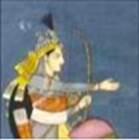
The Field & the Knower of the Field
In BhG. XIII.26 Krishna describes the relationship of the field [kshetra] to
the knower of the field [kshetrajña]. Swami Lakshmanjoo: “Whatever happens
in this world, kshetra and kshetrajña is conducting in each and every
respect. Kshetra means this body, kshetrajña is soul. Which soul? Limited
soul (Purusha). And limited soul is conducted by unlimited soul side by side
in the body. [The unlimited soul] also whips [the limited soul]; He takes
the whip and sees if he has some capacity for learning [saying], ‘let him
rise, let him rise.’ The unlimited soul pushes him and he rises.” Thus we
understand that the God-within us is encouraging us in various ways.
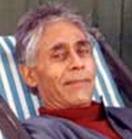
Swami Lakshmanjoo (from 1978) on Liberation from Prakriti’s mischief: “If
you become slave of Prakriti, you are gone. When you follow these, follow
the movements of these five sense organs, i.e., five senses of cognition and
five senses of action, along with the touch of these three gunas, you are
just sheep, you are just carried by Prakriti. And this is that individual
being who is governed by Prakriti. He creates this, he creates this
universe. Because everybody has his own universe in his mind; you have your
own world, you have your own world, you have your own world. And that world
you have created by combination of these…by following your nature. When you
command Prakriti, then you don’t create your world. Once you have not
created your world, you are free, you have no rebirth. You won’t come…you
won’t be entangled in repeated births and deaths.”
I find the above quoted explanation to be very clear — and so interesting
that Swami Lakshmanjoo repeated the phrase “you have your own world” three
times, for my life experience certainly would agree with this. Does it not
all too often feel that each one of us is living in our own individual
world? One cannot imagine what another person sees when they enter a room,
or feels when they first meet anyone. Communication between us humans
entwined in our self-created holograms, remains elusive and mysterious at
best.
The idea that ‘we are not the Doer’ is repeated in BhG. XIV.19: When the
observer sees that there is no other Doer than the gunas, and he knows what
is higher than, transcends the gunas, he attains My state of Being
(madbhavam). Swami Lakshmanjoo says that “there is one [person] in lakhs
(100,000) of people, there is some fortunate person who always observes that
I am above the cycle of the three gunas…I am not touched or painted,
whitewashed, whitewashed by the three gunas…he enters the state of
Parabhairava.”

Direct intuitive perception!
Samkhya pervades the Sanskrit metaphysics and the sage Kapila is generally
thought of as its founder. “Kapila, the great sage, is regarded as the
propounder of Samkhya. In the Samkhya tradition, he is held to be the first
among the wise and he appears at the beginning of each cycle of creation.
[Pulinbihari Chakravarti]” Kapila is said to be the foremost of the siddhas,
and endowed with perfection from the very moment of his birth. Kapila
assumed a form by dint of his supernatural power and “had no physical body
and thus cannot be regarded as an historical person. [Ibid.]”
The Mahabharata says that Kapila was the incarnation of fire [Agni], also
the light residing in the orb of the Sun, and one of the mind-born sons of
the god Brahman. There is a wonderful collection, ‘The Sankhya Aphorisms of
Kapila’ that I have found to be clearly stated, inspiring and enlightening.
[The word Samkhya is spelled both ways because of the Sanskrit letter
involved.] Here are a few of my shortened notes on Kapila’s splendid astute
aphorisms:
The true sense of bondage is non-discrimination. The bondage of the soul is
merely verbal. Bondage resides in the mind and not in the soul — it is
merely a reflection, like the redness of [pellucid] crystal [when a red rose
is near it]. [Ignorance of delusion] can be removed by nothing short of
direct intuitive perception! The origination of the diversified [world of
sense] is that from which has no difference. The subtle body consists of
light. The soul abandons the idea of its being Nature [Prakriti]. Live
alone! Emancipation is not a manifestation of Joy! Paradise is no security
against transmigration. Moksha is not achieved by a counsel of heavenly
people. The body is a site for experience. The subtle body attends the soul
even during the periodic annihilations of the world.

Samkhya Karika of Ishvara Krishna
The book best known and most easily accessed, the Samkhya Karika of Ishvara
Krishna, is now a free PDF online. This is said to be a compendium of the
vast literature on Samkhya. The scholar P. Chakravarti says “the huge
treatise of Kapila was not possible to master even in hundreds of years;
hence the veteran teachers of Samkhya for the sake of benefit to their
pupils dealt with the teachings of Kapila in the short treatises of their
own.” Ishvara Krishna composed this compendium in an effort to clarify and
simplify what had become clouded by “terse and subtle reasonings” in
arguments from opposing sects. There is a Chinese version entitled
‘Gold-Seventy’ or in Sanskrit, Kanaka-Saptati.
There are many intriguing verses in Ishvara Krishna’s Samkhya Karika, for
example: Regarding the three gunas, the Rajas attribute serves no useful
purpose inasmuch as it energizes both Sattva and Tamas attributes which by
themselves, are absolutely inert and as such incapable of performing any
function.
* Of the sense organs, the Mind possesses the nature of both the sensory and
motor organs. It is the deliberating principle. The subtle body is incapable
of having any experience without a physical body of six sheaths; that is why
it migrates. The subtle body migrates as it is tinged with dispositions of
virtue and vice, knowledge and ignorance, passion and dispassion, power and
weakness. Impelled by the purpose of Purusha, this subtle body appears in
different roles, like a dramatic performer, by means of association with
instrumental causes and their effects, through the all-embracing power of
Nature [Prakriti’s maya-shakti].
* Purusha is never bound, nor is he released, nor does he migrate. It is
Prakriti, being the support of manifold creation, that migrates, is bound
and is released. Thus, from the practice of Truth, is produced the wisdom in
the form: ‘I am not,’ ‘nothing is mine,’ and ‘not-I,’ which is final, pure
on account of the absence of error and absolute knowledge. Doubt and falsity
are the two impurities of wisdom.
* The one (Purusha) thinks: She, Prakriti, ‘has been seen by me’ and
therefore loses all interest [in her performance]; the other (Prakriti)
thinks ‘I have been seen’ and ceases to act further. Therefore, even though
if there is still connection, there is no motive for further evolution. With
the absence of the bondage of erroneous knowledge, enjoyment of sense
objects also cannot be there. Because of the momentum of the impulse of
subliminal impressions, the Sprit continues to inhabit the body for a while.
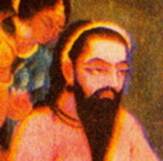
The Rishis & The Essence of the Exact Reality
For millennia, Rishis, Seers and enlightened masters have gone deep into the
Heart and all found the same experience: They did not exist. There is only
the One. The One has been given 1000s of names, and yet is nameless. The One
is infinite forms, and yet is formless. The experiences of those who came
into the Presence that always exists within us all, found its way into
countless expressions, systems of cosmology, metaphysics and philosophies.
No matter how you slice up the holographic pie, no matter how many terms
describe the aspects of the One as it manifests through the Matrix in Time &
Space, there is only the One. When you become weary of learning metaphysical
concepts that have evolved over the centuries, think of the enlightened
genius Kashmir Shaivite, Abhinavagupta, who in his 'Paramarthasara, the
Essence of the Exact Reality' has said:
“All Such Theories are Mere Suppositions & Imaginary Concepts of
Thinkers”
Once you begin to consider the nature of your relationship to the universe
and the origin of both, it is quite natural to want to systematize your
findings to both share and clarify. Ever since we lost the memory of our
absolute nature, we began this process. Abhinavagupta states that all such
theories are “mere suppositions and imaginary concepts of thinkers.”
Why? Because – “No diversity is the real truth.”
Paramartharsara: 27. The Buddhist thinkers maintain that the constant flow
of momentary consciousness is the only reality. The Vedic thinkers say that
the single self, penetrating inside pervading, directing and governing all
minds, is the ultimate reality.
Some Upanishadic thinkers take the power of animation as the ultimate truth,
while other such thinkers say that one universal Atman, shining as all
phenomena, is the only reality. Some other thinkers take either the
psycho-physical organism or the generalities or lastly the individual as the
ultimate truth.
But all such theories are merely dialectical speculations useful in
discussions and debates. None among such entities has a real existence, as
all these are mere suppositions and imaginary concepts of thinkers.
28. In the same way that matters like piety and sin, heaven and hell, birth
and death, pleasure and pain… and so on, do never exist in reality, but
appear in the Self on account of delusion (maya).
No diversity is the real truth. Its existence is simply apparent. It shines
in the Atman as reflections shine in a mirror. All this appears to be a
bonded being on account of the delusion caused by maya.
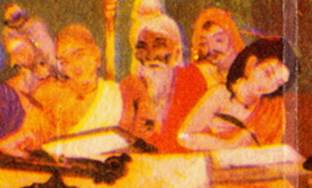
As I consider Abhinavagupta’s enlightenment to be beyond question, I feel I
can draw certain conclusions from his emphatic statements:
*There is Oneness and the appearance of multiplicity.
*The domain of Prakriti is the ‘appearance’ of transitory multiplicity in
the form of the temporal illusory hologram produced by the matrix, meaning
Prakriti’s shakti-maya gunas.
*Therefore the mechanics of this multiplicity can be described in many
diverse ways depending on the consciousness of the experiencer.

Threads in the Labyrinth
Each is a product of the individual’s consciousness based on his or her
state of balance among the three gunas. Prakriti’s guna-maya manifestations
are all a part of the illusion of multiplicity - even when they are grand
and enlightening illusory thoughts.
If it is true, as Abhinavagupta says, that all such theories are “mere
suppositions and imaginary concepts of thinkers” then why should we read
these wonderfully arcane and often complex metaphysical systems that take
great pains to delineate the mechanics of consciousness? Metaphysical
systems are the threads in the Labyrinth that lift our consciousness into
the higher frequencies, out of the mundane and into the sacred.
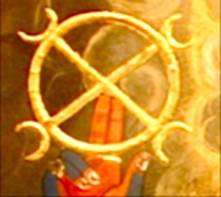
The words of these ancient seers are in the higher waveform frequencies that
we want to be in. Immersing yourself in their consciousness through reading
their thoughts will bring our consciousness closer to theirs. You will still
have to ‘experience’ what you read. Just reading or hearing the truth is not
enough. You must intuitively perceive, know, and feel these teachings in
your deepest being. They must become a part of you – experientially. This is
why so many diverse forms of spiritual practices have developed. These
practices are the effort that allows you to make Wisdom-Knowledge a reality,
the Real that has power to release you from the bondage of delusion.
A huge piece of this 'bondage of delusion' is thinking that we are the Doer.
However, having immersed our consciousness in Krishna's sublime liberating
wisdom and Samkhya, we now know that, "We are not the Doer!" We are neither
as he cajoles Arjuna, blockheads or fools, in Sanskrit
durmatis.
We meet in the Heart!
V. Susan Ferguson

Bhagavad Gita, In the Light of Kashmir Shaivism, with original video,
Revealed by Swami Lakshmanjoo, Edited by John Hughes, Co-editors Viresh
Hughes and Denise Hughes; Universal Shaiva Fellowship, 2013.
The Gita for Modern Man, by Krishna Chaitanya; Clarion Books, Associated
with Hind Pocket Books, New Delhi, 1986, 1992.
Life’s Pilgrimage Through The Gita, by Swami Muni Narayana Prasad; D.K.
Printworld, New Delhi, 2005, 2008.
Mundaka Upanishad, with original text in Sanskrit and Roman transliteration;
Translation with an exhaustive commentary by Swami Muni Narayana Prasad;
D.K. Printworld Ltd., New Delhi, 1998.
The Bhagavad Gita in the Mahabharata, A Bilingual Edition, translated by
J.A.B. van Buitenen; The University of Chicago Press, 1981.
The Bhagavad Gita, translated by Winthrop Sargeant; State University of New
York Press, 1994.
Abhinavagupta’s Commentary on the Bhagavad Gita, Gitartha Samgraha,
translated by Boris Marjanovic; Indica Books, Varanasi, 2002, 2004.
Origin and Development of the Samkhya System of Thought, by P. Chakravarti,
M.A., Curator of Manuscripts, The Asiatic Society, Calcutta; Oriental Books
Reprint Corporation, Munshiram Manoharlal Publishers Pvt. Ltd., New Delhi,
1951, 1975.
Rig Veda Samhita: First Mandala, (Part 2), Sukta-s (122-191), Text in
Devanagari, Translation and Notes by R.L. Kashyap; Sri Aurobindo Kapali
Sastry Institute of Vedic Culture, Bangalore, India, 2009.
The Sankhya Aphorisms of Kapila, with extracts from Vijñanabhikshu’s
Commentary, edited and translated by James R. Ballantyne; Munshiram
Manoharlal Publishers Pvt. Ltd., New Delhi, 2003.
Samkhya Karika of Ishvara Krishna, with Tattva Kaumudi of Sri Vacaspati
Mishra; by Swami Virupakshananda; Sri Ramakrishna Math, Mylapore, Madras,
1995.
Essence of the Exact Reality or
PARAMARTHASARA of Abhinavagupta
With English translation & notes by Dr. B.N. Pandit
Munshiram Manoharlal Publishers; 1991, New Delhi
A Concise Dictionary of Indian Philosophy, Sanskrit Terms Defined in
English, by John Grimes; Indica, Varanasi, 2009.
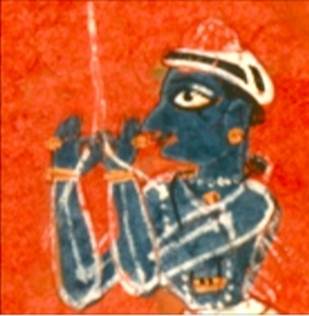
|
Questions
or comments about articles on this site: |
Copyright© V. Susan Ferguson |
Technical questions or
comments about the site: |
|
|